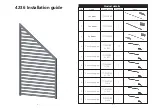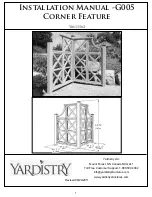
18
4 FEATURE SUMMARIES
4
4
.
.
5
5
S
S
e
e
n
n
s
s
o
o
r
r
P
P
r
r
o
o
t
t
e
e
c
c
t
t
i
i
o
o
n
n
If the tested part contains water or an oil, or if the leak tester is used along with water-immersion test, water
and/or oil may enter the tester from the tested part during exhaust stage causing malfunctioning. The
feature protects sensor from such contamination
4.5.1 Cleaning pneumatic circuit by Exhaust air blow (DL3)
Air blow of DL3 is used to clean the pneumatic circuit and prevent DPS from contaminated by blowing off
water, oils and other foreign matter inside the pneumatic circuit along with self check mentioned in section
4.4. Air blow can be disabled by setting DL3 timer to zero. This feature is not available on the
high-pressure model (H15).
4.5.2 External exhaust valve-ready
Air-operated valve are installed between the tested part and the master and the leak tester to effect external
exhaust. An external exhaust valve unit (G3) is separately required.
The standard leak tester controls the G3.
This feature is not available for vacuum pressure leak tester.
4
4
.
.
6
6
C
C
A
A
L
L
p
p
o
o
r
r
t
t
s
s
The front panel contains inspection ports that connect to the
tested part and master measurement systems. Connect a
Leak Master, a Leak Calibrator (volume change method), flow
meter to these ports to make a daily check on leak sensitivity
and carry out leak calibration.
Use of the following standards manufactured by us is
recommended to check the test pressure and differential
pressure on a scheduled basis:
The CAL port connectors leading to both the tested part and
master measurement systems are M10
×
1.5 (O-ring S-12).
The conversion fitting M10-Rc1/4 (option) is used to connect an
instrument other than a Leak Master (LM-1B).
G3-ME
















































